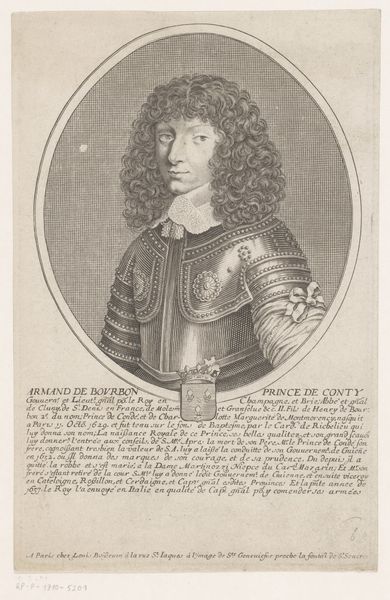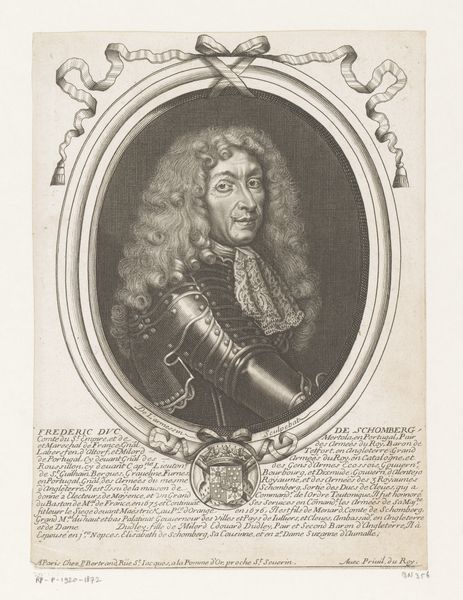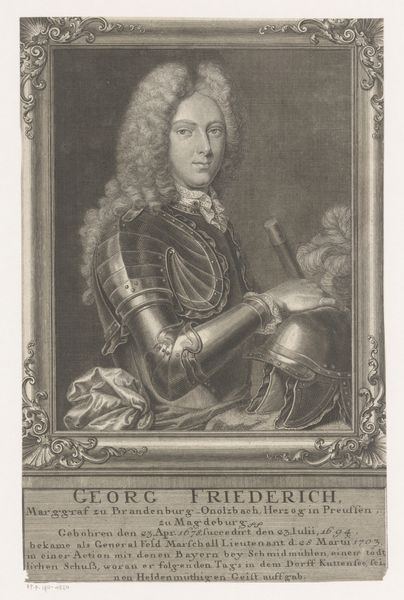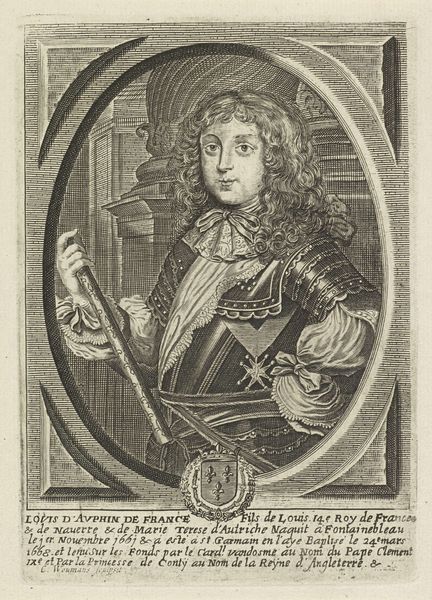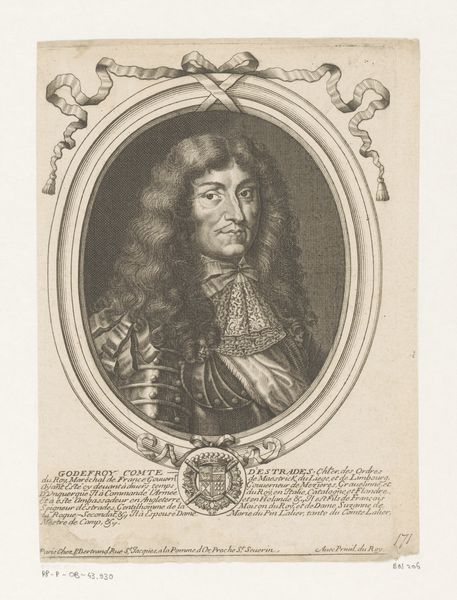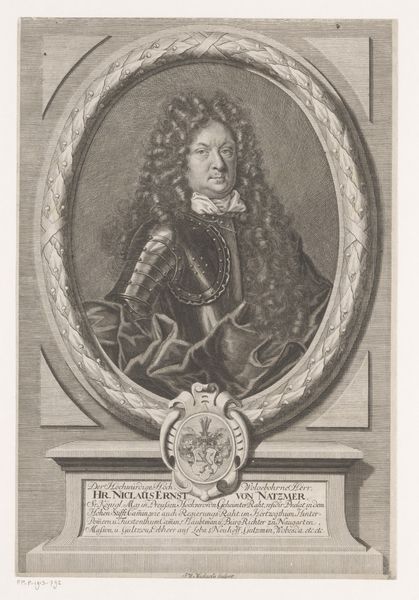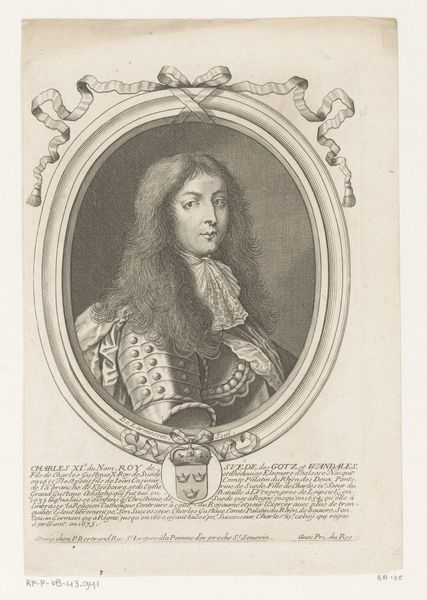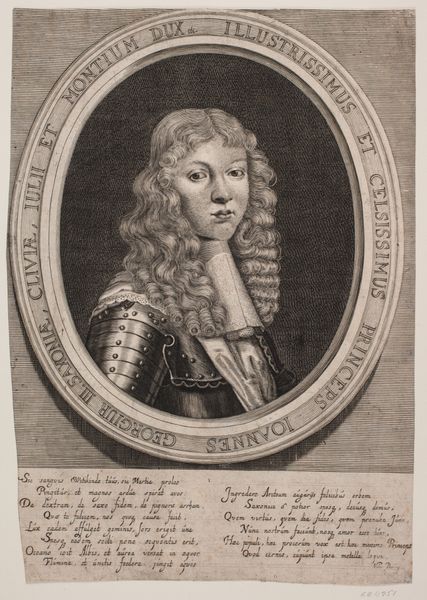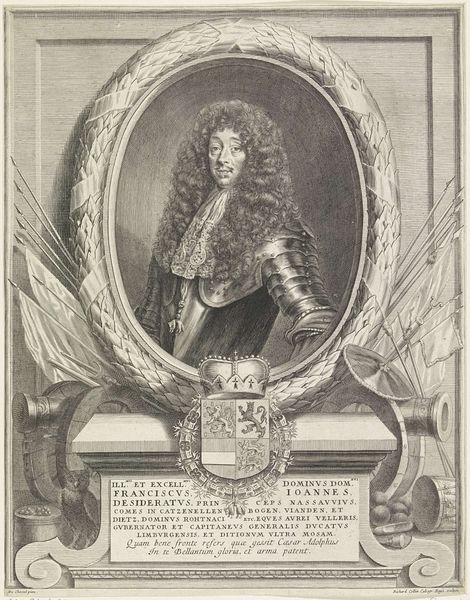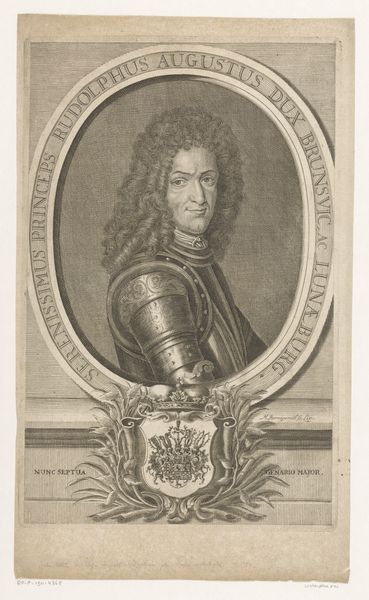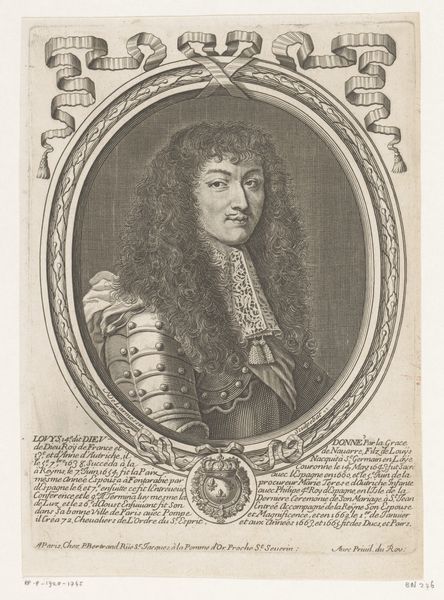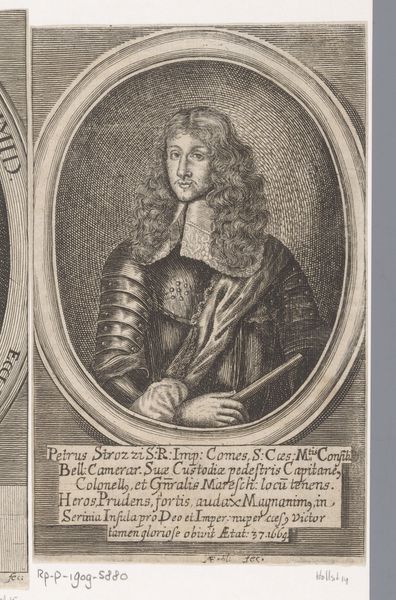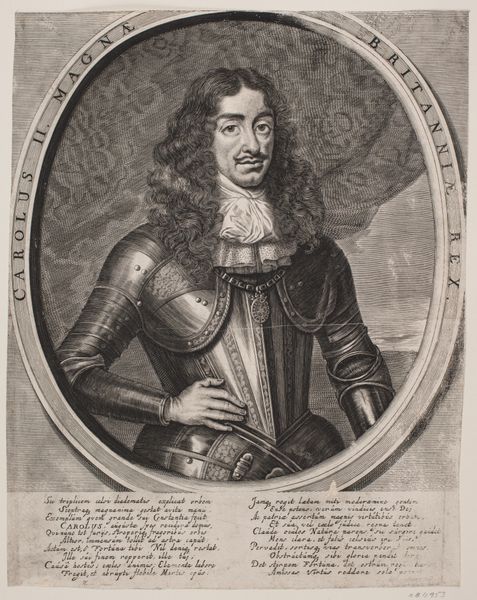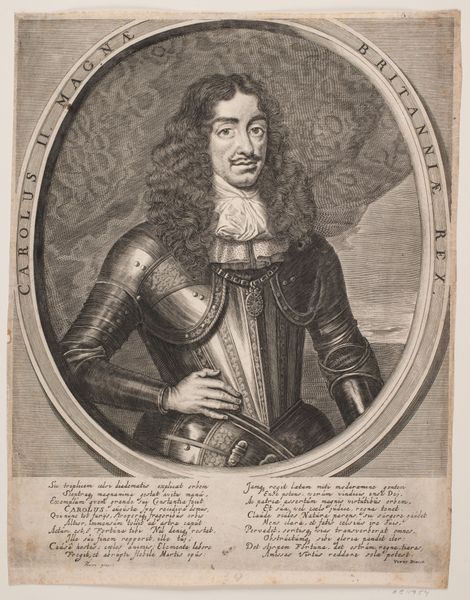
etching, engraving
#
portrait
#
baroque
#
etching
#
engraving
Dimensions: height 236 mm, width 151 mm
Copyright: Rijks Museum: Open Domain
Curator: Here we have Teresa del Po's "Portret van Michele, baron van Asti," made sometime between 1656 and 1716. The Rijksmuseum is fortunate to have it. The medium is etching and engraving. Editor: Right away, what strikes me is the contrast between the Baron's somewhat youthful face and the seriousness of the Baroque armor. It creates an intriguing tension. It's like, "Who is this guy behind all this steel?" Curator: Precisely! It’s a common trope of Baroque portraiture— to assert power and status. Teresa del Po’s skillful lines highlight the details of the armor, its gleam promising power and reflecting light, while also emphasizing the lace bow on his neck. Isn’t it almost… flirtatious? Editor: Definitely! There’s an unexpected softness. Look at his curls! He’s presented as both a warrior and a refined nobleman. Do you think the inscription contributes to this duplicity? I find the Latin difficult to understand and think the artist had another agenda by displaying it at the base. Curator: Good eye. Yes, this piece very much speaks to the complex relationship between portraiture and power during this time, a play of presenting a public image steeped in socio-political meanings and conventions. This wasn’t just about likeness; it was about crafting a message and preserving legacy through propaganda. It tells his history of battle. Etchings and engravings allowed these images of powerful people to circulate widely, cementing their images in the public consciousness. Editor: Makes me think about how much image construction still factors into our modern view of historical figures. Do you think she liked him? Curator: It’s impossible to say for sure, of course, but given the detail, and perhaps even that… softness… you picked up on, it wouldn't surprise me. Maybe even an intimate or working affection grew. We'll never know for sure but that possibility offers so much flavor to appreciating these pieces. Editor: Absolutely! Looking again, the framework of the portrait adds another layer – enclosing, highlighting, or even, dare I say, mythologizing the Baron within his legacy. Thanks for sharing this with me. Curator: And thank you. It is delightful to consider how something fixed in history remains fluid and fresh.
Comments
No comments
Be the first to comment and join the conversation on the ultimate creative platform.
